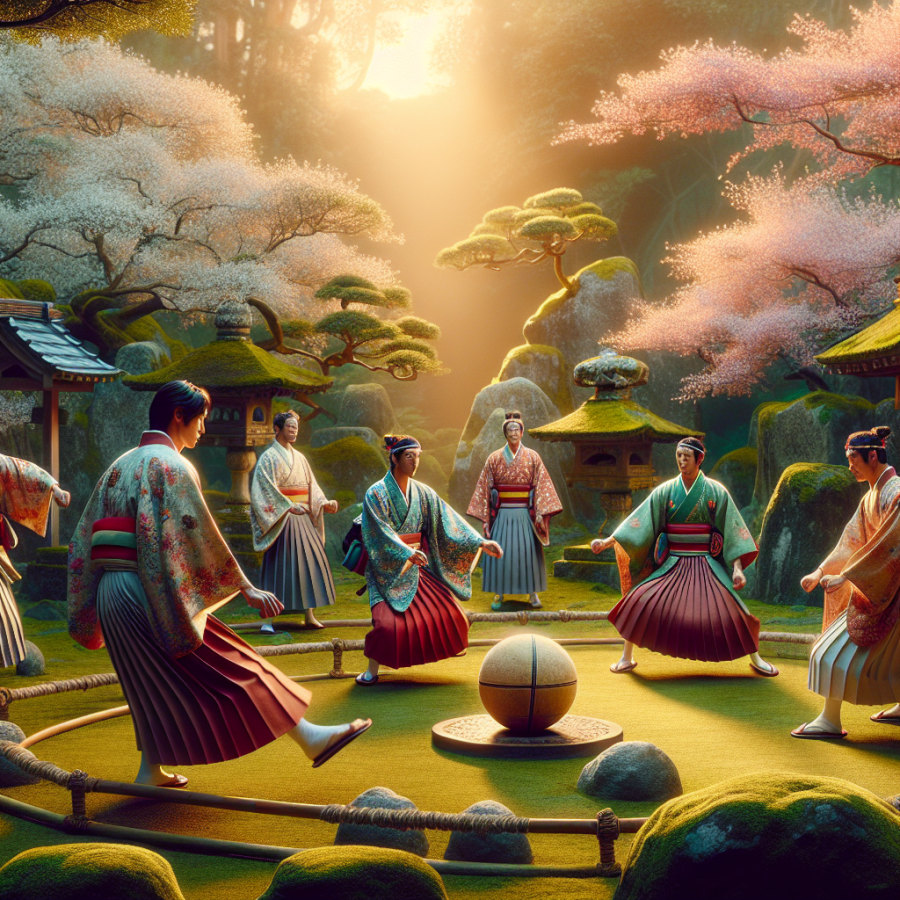The Artistic Flow and Rituals of Kemari: Preserving a Centuries-Old Sporting Heritage
Kemari, a traditional Japanese sport often likened to “ancient soccer,” has a rich cultural significance that goes beyond the mere act of keeping a ball in the air. It is a practice steeped in ritual, grace, and a sense of community that has been preserved for centuries. The game, which dates back to the Heian period (794-1185), is more than a physical activity—it is a performance, an art, and a testament to Japan’s devotion to maintaining its cultural heritage.
Unlike modern soccer, Kemari is not a competitive sport. Instead, it is an exhibition of elegance and poise, aiming for the players—known as mariashi—to work together to keep the deerskin ball aloft without using their hands. The players, dressed in elaborate traditional costumes reminiscent of court nobility, add further to the sport's aesthetic appeal. The elaborate attire, usually featuring the colorful and multi-layered kariginu (hunting garment) and the eboshi (a black lacquered hat), is a nod to its royal roots and emphasizes the importance of formality and ceremony in the game.
Among the unique aspects of Kemari is its playing field, known as a kikutsubo, a specifically marked area under the trees, often within a Shinto shrine. This location underscores the game’s connection to spirituality and nature. The best kemari are said to be played under the cherry blossoms in spring or the vibrant foliage of autumn, adding a transcendent beauty to the sport.
The artistic flow of Kemari is not only in the physical volleying of the ball but also in the rituals performed before and after the game. Before play begins, participants engage in a ceremonial purification and a series of set movements, claps, and bows. This ritual, passed down through generations, is a core feature of Kemari, reflecting its origins as a courtly game. Players must also adhere to certain etiquettes, such as praising a good play and encouraging fellow players in a prescribed manner, reinforcing the sport’s cooperative nature.
Special attention is also given to the ball, or mari, itself. The preparation of the mari is an intricate process where raw deerskin is meticulously cut, soaked, stitched, and inflated. The creation of the ball is a craft that demands patience and skill, and those who make them are often trained in the art for many years.
Read also:
Mastering the Art of Stone Put: Techniques and Training Tips
Exploring the Roots of Kemari: Japan's Traditional Football Ballet
Kemari, a sport that once graced the Imperial courts of Japan, stands as a testament to the nation's rich cultural tapestry—a form of entertainment that wove together athleticism and artistry. This ancient game, reminiscent of what many know today as soccer or football, was less focused on competition and more on the beauty of shared play and movement, earning it the poetic moniker of "football ballet."
The origins of Kemari trace back to the Asuka period, blossoming during the Heian era (794 to 1185), a time when Japanese society emphasized refinement and elegance. Influenced by the Chinese game of cuju, it was adapted into a uniquely Japanese pastime that captivated the nobility and Imperial households. The precise choreography and focus on harmony aligned well with the period's aesthetic values.
A traditional Kemari match features players, known as “mariashi,” dressed in elaborate costumes reminiscent of Heian court attire, complete with colorful "kariginu" robes and distinctive "eboshi" hats. The attire is more than mere adornment—it's a gateway to the past, enveloping participants in the very fabric of the history they keep alive.
Unlike modern football, where scoring goals is paramount, Kemari's objective is to keep a deerskin ball, the "mari," aloft, using only the feet, for as long as possible. The players, often in a circle, work together in a sequence of gentle, rhythmic kicks—a dance of collaboration and mutual respect. This cooperative aspect highlights the Japanese virtue of "wa," or harmony, prioritizing the group's aesthetic flow over individual triumph.
The court or playing field, known as the "kikutsubo," often sits within Shinto shrines, ensconcing the activity within a sacred space and underscoring the sport's spiritual dimension. The four trees planted at each corner of the kikutsubo - cherry, maple, pine, and willow - are symbols of the seasons and offer a deep connection with nature while providing the players with orientation during the game.
Kemari is not a daily sight in modern Japan, but its legacy endures. Annual events, particularly at the Shinto shrine of Shimogamo in Kyoto, allow spectators to witness this mesmerizing activity. The ritualistic aspect of the game ties the experience to the days of emperors and courtiers, with each kick serving as a bridge to the past.




